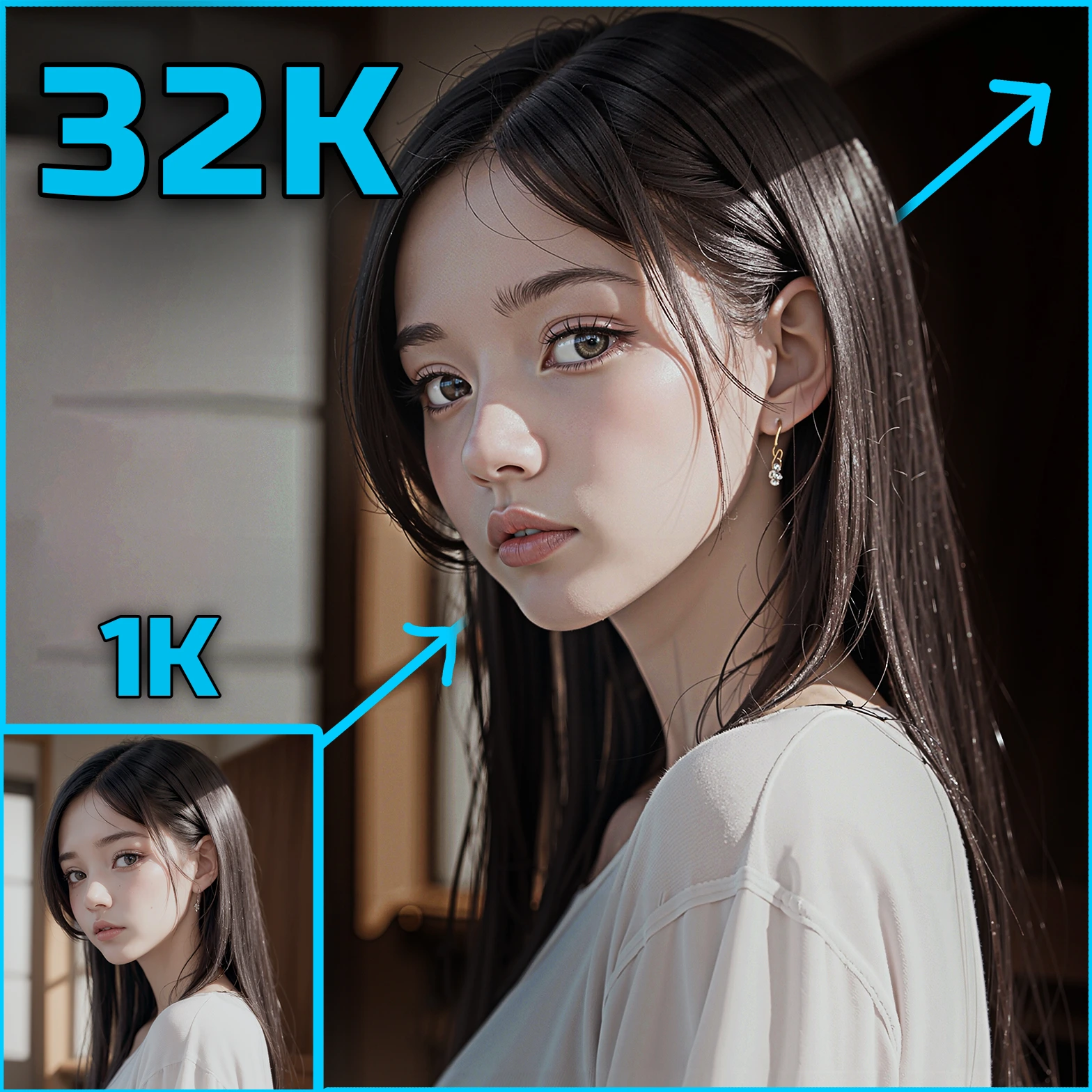ComfyUI Node: SharkSampler
SharkSampler
CategoryRES4LYF/samplers
ClownsharkBatwing (Account age: 314days) Extension
RES4LYF Latest Updated
2025-04-04 Github Stars
0.1K
How to Install RES4LYF
Install this extension via the ComfyUI Manager by searching for RES4LYF- 1. Click the Manager button in the main menu
- 2. Select Custom Nodes Manager button
- 3. Enter RES4LYF in the search bar
Visit ComfyUI Online for ready-to-use ComfyUI environment
- Free trial available
- 16GB VRAM to 80GB VRAM GPU machines
- 400+ preloaded models/nodes
- Freedom to upload custom models/nodes
- 200+ ready-to-run workflows
- 100% private workspace with up to 200GB storage
- Dedicated Support
SharkSampler Description
Sophisticated node for AI art generation, managing and executing image sampling with customizable options for generative models.
SharkSampler:
The SharkSampler is a sophisticated node designed to facilitate the sampling process in AI art generation, providing a robust framework for generating high-quality images. Its primary purpose is to manage and execute the sampling process, which involves iteratively refining an image from a latent space representation to a final output. This node is particularly beneficial for artists and developers working with generative models, as it offers a range of customizable options to fine-tune the sampling process according to specific artistic needs. By leveraging advanced algorithms and techniques, SharkSampler ensures that the generated images are not only visually appealing but also adhere to the desired stylistic and thematic constraints. Its integration into the ComfyUI environment allows for seamless interaction with other nodes, enhancing the overall workflow efficiency and creative potential.
SharkSampler Input Parameters:
model
The model parameter specifies the generative model to be used for the sampling process. It is crucial as it determines the underlying architecture and capabilities of the image generation. The choice of model can significantly impact the style and quality of the output images.
cfg
The cfg parameter stands for "configuration" and is used to adjust the strength of the guidance during sampling. It influences how closely the generated image adheres to the input conditions or prompts. A higher value typically results in images that more closely match the desired attributes.
sampler_mode
The sampler_mode parameter defines the mode of sampling to be employed. Different modes can offer various trade-offs between speed and quality, allowing users to select the most appropriate method for their specific use case.
scheduler
The scheduler parameter controls the scheduling of the sampling steps, dictating the order and timing of operations. This can affect the convergence and stability of the sampling process, impacting the final image quality.
steps
The steps parameter indicates the number of iterations the sampler will perform. More steps generally lead to higher quality images, as the process has more opportunities to refine the output, but it also increases computation time.
denoise
The denoise parameter is used to control the level of noise reduction applied during sampling. Proper denoising is essential for achieving clear and artifact-free images, especially in complex scenes.
denoise_alt
The denoise_alt parameter provides an alternative denoising strategy, offering flexibility in how noise is managed during the sampling process. This can be useful for experimenting with different noise reduction techniques.
noise_type_init
The noise_type_init parameter specifies the initial type of noise to be used in the sampling process. The choice of noise type can influence the texture and randomness of the generated images.
latent_image
The latent_image parameter represents the initial latent space representation of the image. It serves as the starting point for the sampling process, from which the final image is iteratively refined.
positive
The positive parameter is used to define positive conditions or prompts that guide the image generation process. It helps in steering the output towards desired attributes or themes.
negative
The negative parameter specifies negative conditions or prompts, which are used to avoid certain attributes or themes in the generated image. This helps in refining the output to better match the user's intent.
sampler[0]
The sampler[0] parameter is a specific configuration setting for the sampler, potentially affecting its behavior and performance. It allows for fine-tuning of the sampling process.
sigmas
The sigmas parameter is related to the noise schedule and controls the variance of noise applied during sampling. Adjusting sigmas can impact the smoothness and detail of the generated images.
latent_noise
The latent_noise parameter introduces noise into the latent space, which can help in exploring different variations and enhancing the diversity of the generated images.
latent_noise_match
The latent_noise_match parameter ensures that the introduced latent noise aligns with specific criteria or patterns, aiding in consistent and coherent image generation.
noise_stdev
The noise_stdev parameter defines the standard deviation of the noise applied, influencing the intensity and distribution of noise in the sampling process.
noise_mean
The noise_mean parameter sets the mean value of the noise, affecting the baseline level of noise introduced during sampling.
noise_normalize
The noise_normalize parameter determines whether the noise should be normalized, which can help in maintaining consistent noise levels across different sampling runs.
noise_is_latent
The noise_is_latent parameter indicates whether the noise is applied directly in the latent space, impacting how the noise interacts with the image generation process.
d_noise
The d_noise parameter is a differential noise setting, potentially affecting the granularity and detail of the noise applied during sampling.
alpha_init
The alpha_init parameter sets the initial alpha value, which can influence the blending and transition effects during the sampling process.
k_init
The k_init parameter defines the initial k-value, potentially affecting the scaling and transformation operations in the sampling process.
cfgpp
The cfgpp parameter is an advanced configuration setting, offering additional control over the sampling process for experienced users.
noise_seed
The noise_seed parameter sets the seed for random noise generation, ensuring reproducibility and consistency across different sampling runs.
shift
The shift parameter controls the spatial or color shift applied during sampling, allowing for creative adjustments to the generated images.
base_shift
The base_shift parameter sets a baseline shift value, providing a reference point for further adjustments during the sampling process.
options
The options parameter allows for additional configuration settings, offering flexibility and customization in the sampling process.
sde_noise
The sde_noise parameter is related to stochastic differential equation noise, potentially affecting the randomness and variability of the generated images.
sde_noise_steps
The sde_noise_steps parameter defines the number of steps for applying sde_noise, impacting the level of detail and complexity in the noise pattern.
shift_scaling
The shift_scaling parameter controls the scaling factor for shifts, allowing for precise adjustments to the spatial or color shifts applied.
extra_options
The extra_options parameter provides a space for additional, user-defined options, enabling further customization and experimentation in the sampling process.
SharkSampler Output Parameters:
out_samples
The out_samples parameter represents the final output samples generated by the SharkSampler. These samples are the refined images that result from the sampling process, ready for use or further processing.
out_samples_fp64
The out_samples_fp64 parameter provides the output samples in 64-bit floating-point format, offering higher precision and detail for applications that require it.
out_denoised_samples
The out_denoised_samples parameter contains the denoised versions of the output samples, ensuring that the images are clear and free from unwanted noise artifacts.
out_denoised_samples_fp64
The out_denoised_samples_fp64 parameter provides the denoised output samples in 64-bit floating-point format, offering enhanced precision for high-quality image applications.
SharkSampler Usage Tips:
- Experiment with different
cfgvalues to find the right balance between adherence to prompts and creative freedom in the generated images. - Utilize the
noise_seedparameter to ensure consistent results across multiple runs, especially when fine-tuning the sampling process. - Adjust the
stepsparameter to control the trade-off between image quality and computation time, increasing steps for more detailed outputs. - Explore the
denoiseanddenoise_altparameters to achieve the desired level of noise reduction, enhancing image clarity and quality.
SharkSampler Common Errors and Solutions:
"Invalid model configuration"
- Explanation: This error occurs when the specified model is not compatible with the SharkSampler.
- Solution: Ensure that the model parameter is set to a supported generative model and verify its compatibility with the SharkSampler.
"Noise seed mismatch"
- Explanation: This error indicates a conflict in the noise seed settings, potentially affecting reproducibility.
- Solution: Check the
noise_seedparameter and ensure it is consistently set across different runs or configurations.
"Sampling steps exceeded"
- Explanation: This error occurs when the number of sampling steps exceeds the allowed limit.
- Solution: Reduce the
stepsparameter to stay within the permissible range and optimize computation time.
"Denoising failure"
- Explanation: This error indicates an issue with the denoising process, resulting in unclear or noisy images.
- Solution: Review the
denoiseanddenoise_altparameters, adjusting them to improve the denoising effectiveness.
SharkSampler Related Nodes
RunComfy is the premier ComfyUI platform, offering ComfyUI online environment and services, along with ComfyUI workflows featuring stunning visuals. RunComfy also provides AI Playground, enabling artists to harness the latest AI tools to create incredible art.


